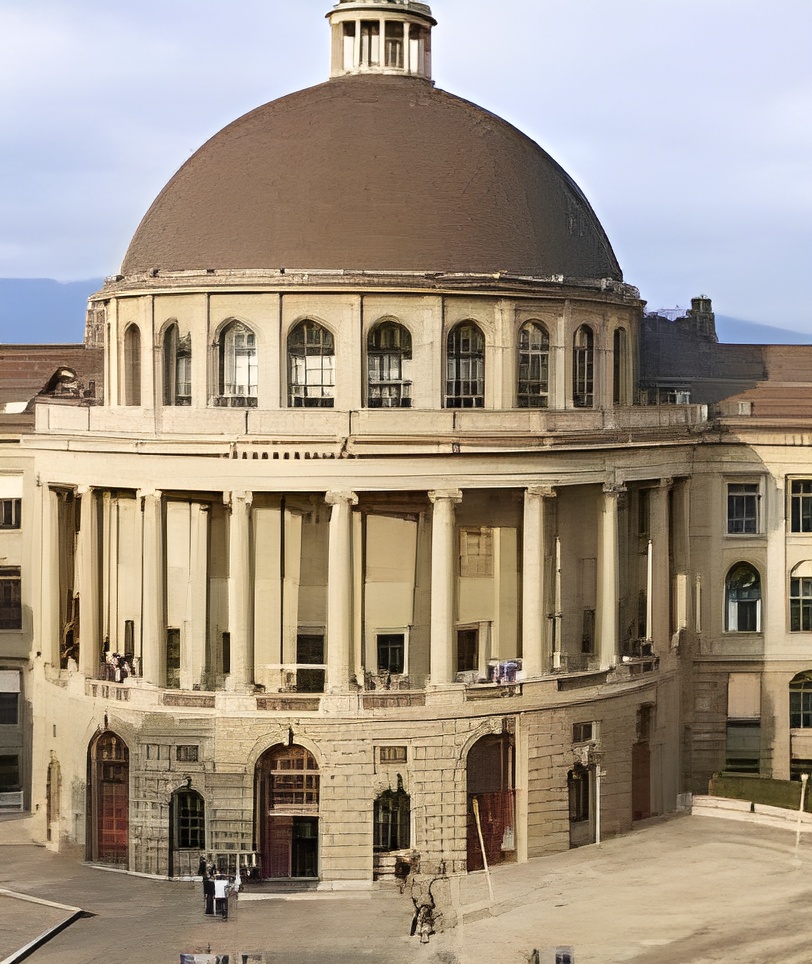Training and testing codes for USRNet, DnCNN, FFDNet, SRMD, DPSR, MSRResNet, ESRGAN, BSRGAN, SwinIR
Computer Vision Lab, ETH Zurich, Switzerland
- News (2021-09-09): Add main_download_pretrained_models.py to download pre-trained models.
- News (2021-09-08): Add matlab code to zoom local part of an image for the purpose of comparison between different results.
- News (2021-09-07): We upload the training code of SwinIR
and provide an interactive online Colob demo for real-world image SR. Try to super-resolve your own images on Colab!
| Real-World Image (x4) | BSRGAN, ICCV2021 | Real-ESRGAN | SwinIR (ours) |
|---|---|---|---|
 |
 |
 |
 |
 |
 |
 |
 |
-
News (2021-08-31): We upload the training code of BSRGAN.
-
News (2021-08-24): We upload the BSRGAN degradation model.
-
News (2021-08-22): Support multi-feature-layer VGG perceptual loss and UNet discriminator.
-
News (2021-08-18): We upload the extended BSRGAN degradation model. It is slightly different from our published version.
-
News (2021-06-03): Add testing codes of GPEN (CVPR21) for face image enhancement: main_test_face_enhancement.py
-
News (2021-05-13): Add PatchGAN discriminator.
-
News (2021-05-12): Support distributed training, see also https://github.com/xinntao/BasicSR/blob/master/docs/TrainTest.md.
-
News (2021-01): BSRGAN for blind real image super-resolution will be added.
-
Pull requests are welcome!
-
Correction (2020-10): If you use multiple GPUs for GAN training, remove or comment Line 105 to enable
DataParallelfor fast training -
News (2020-10): Add utils_receptivefield.py to calculate receptive field.
-
News (2020-8): A
deep plug-and-play image restoration toolboxis released at cszn/DPIR. -
Tips (2020-8): Use this to avoid
out of memoryissue. -
News (2020-7): Add main_challenge_sr.py to get
FLOPs,#Params,Runtime,#Activations,#Conv, andMax Memory Allocated.
from utils.utils_modelsummary import get_model_activation, get_model_flops
input_dim = (3, 256, 256) # set the input dimension
activations, num_conv2d = get_model_activation(model, input_dim)
logger.info('{:>16s} : {:<.4f} [M]'.format('#Activations', activations/10**6))
logger.info('{:>16s} : {:
- News (2020-6): Add USRNet (CVPR 2020) for training and testing.
Clone repo
git clone https://github.com/cszn/KAIR.git
pip install -r requirement.txt
Training
You should modify the json file from options first, for example, setting "gpu_ids": [0,1,2,3] if 4 GPUs are used, setting "dataroot_H": "trainsets/trainH" if path of the high quality dataset is trainsets/trainH.
- Training with
DataParallel- PSNR
python main_train_psnr.py --opt options/train_msrresnet_psnr.json
- Training with
DataParallel- GAN
python main_train_gan.py --opt options/train_msrresnet_gan.json
- Training with
DistributedDataParallel- PSNR - 4 GPUs
python -m torch.distributed.launch --nproc_per_node=4 --master_port=1234 main_train_psnr.py --opt options/train_msrresnet_psnr.json --dist True
- Training with
DistributedDataParallel- PSNR - 8 GPUs
python -m torch.distributed.launch --nproc_per_node=8 --master_port=1234 main_train_psnr.py --opt options/train_msrresnet_psnr.json --dist True
- Training with
DistributedDataParallel- GAN - 4 GPUs
python -m torch.distributed.launch --nproc_per_node=4 --master_port=1234 main_train_gan.py --opt options/train_msrresnet_gan.json --dist True
- Training with
DistributedDataParallel- GAN - 8 GPUs
python -m torch.distributed.launch --nproc_per_node=8 --master_port=1234 main_train_gan.py --opt options/train_msrresnet_gan.json --dist True
- Kill distributed training processes of
main_train_gan.py
kill $(ps aux | grep main_train_gan.py | grep -v grep | awk '{print $2}')
| Method | Original Link |
|---|---|
| DnCNN | https://github.com/cszn/DnCNN |
| FDnCNN | https://github.com/cszn/DnCNN |
| FFDNet | https://github.com/cszn/FFDNet |
| SRMD | https://github.com/cszn/SRMD |
| DPSR-SRResNet | https://github.com/cszn/DPSR |
| SRResNet | https://github.com/xinntao/BasicSR |
| ESRGAN | https://github.com/xinntao/ESRGAN |
| RRDB | https://github.com/xinntao/ESRGAN |
| IMDB | https://github.com/Zheng222/IMDN |
| USRNet | https://github.com/cszn/USRNet |
| DRUNet | https://github.com/cszn/DPIR |
| DPIR | https://github.com/cszn/DPIR |
| BSRGAN | https://github.com/cszn/BSRGAN |
| SwinIR | https://github.com/JingyunLiang/SwinIR |
Network architectures
Testing
| Method | model_zoo |
|---|---|
| main_test_dncnn.py | dncnn_15.pth, dncnn_25.pth, dncnn_50.pth, dncnn_gray_blind.pth, dncnn_color_blind.pth, dncnn3.pth |
| main_test_ircnn_denoiser.py | ircnn_gray.pth, ircnn_color.pth |
| main_test_fdncnn.py | fdncnn_gray.pth, fdncnn_color.pth, fdncnn_gray_clip.pth, fdncnn_color_clip.pth |
| main_test_ffdnet.py | ffdnet_gray.pth, ffdnet_color.pth, ffdnet_gray_clip.pth, ffdnet_color_clip.pth |
| main_test_srmd.py | srmdnf_x2.pth, srmdnf_x3.pth, srmdnf_x4.pth, srmd_x2.pth, srmd_x3.pth, srmd_x4.pth |
| The above models are converted from MatConvNet. | |
| main_test_dpsr.py | dpsr_x2.pth, dpsr_x3.pth, dpsr_x4.pth, dpsr_x4_gan.pth |
| main_test_msrresnet.py | msrresnet_x4_psnr.pth, msrresnet_x4_gan.pth |
| main_test_rrdb.py | rrdb_x4_psnr.pth, rrdb_x4_esrgan.pth |
| main_test_imdn.py | imdn_x4.pth |
model_zoo
trainsets
- https://github.com/xinntao/BasicSR/blob/master/docs/DatasetPreparation.md
- train400
- DIV2K
- Flickr2K
- optional: use split_imageset(original_dataroot, taget_dataroot, n_channels=3, p_size=512, p_overlap=96, p_max=800) to get
trainsets/trainHwith small images for fast data loading
testsets
- https://github.com/xinntao/BasicSR/blob/master/docs/DatasetPreparation.md
- set12
- bsd68
- cbsd68
- kodak24
- srbsd68
- set5
- set14
- cbsd100
- urban100
- manga109
References
@inproceedings{liang2021swinir,
title={SwinIR: Image Restoration Using Swin Transformer},
author={Liang, Jingyun and Cao, Jiezhang and Sun, Guolei and Zhang, Kai and Van Gool, Luc and Timofte, Radu},
booktitle={IEEE International Conference on Computer Vision Workshops},
year={2021}
}
@inproceedings{zhang2021designing,
title={Designing a Practical Degradation Model for Deep Blind Image Super-Resolution},
author={Zhang, Kai and Liang, Jingyun and Van Gool, Luc and Timofte, Radu},
booktitle={IEEE International Conference on Computer Vision},
year={2021}
}
@article{zhang2021plug, % DPIR & DRUNet & IRCNN
title={Plug-and-Play Image Restoration with Deep Denoiser Prior},
author={Zhang, Kai and Li, Yawei and Zuo, Wangmeng and Zhang, Lei and Van Gool, Luc and Timofte, Radu},
journal={IEEE Transactions on Pattern Analysis and Machine Intelligence},
year={2021}
}
@inproceedings{zhang2020aim, % efficientSR_challenge
title={AIM 2020 Challenge on Efficient Super-Resolution: Methods and Results},
author={Kai Zhang and Martin Danelljan and Yawei Li and Radu Timofte and others},
booktitle={European Conference on Computer Vision Workshops},
year={2020}
}
@inproceedings{zhang2020deep, % USRNet
title={Deep unfolding network for image super-resolution},
author={Zhang, Kai and Van Gool, Luc and Timofte, Radu},
booktitle={IEEE Conference on Computer Vision and Pattern Recognition},
pages={3217--3226},
year={2020}
}
@article{zhang2017beyond, % DnCNN
title={Beyond a gaussian denoiser: Residual learning of deep cnn for image denoising},
author={Zhang, Kai and Zuo, Wangmeng and Chen, Yunjin and Meng, Deyu and Zhang, Lei},
journal={IEEE Transactions on Image Processing},
volume={26},
number={7},
pages={3142--3155},
year={2017}
}
@inproceedings{zhang2017learning, % IRCNN
title={Learning deep CNN denoiser prior for image restoration},
author={Zhang, Kai and Zuo, Wangmeng and Gu, Shuhang and Zhang, Lei},
booktitle={IEEE conference on computer vision and pattern recognition},
pages={3929--3938},
year={2017}
}
@article{zhang2018ffdnet, % FFDNet, FDnCNN
title={FFDNet: Toward a fast and flexible solution for CNN-based image denoising},
author={Zhang, Kai and Zuo, Wangmeng and Zhang, Lei},
journal={IEEE Transactions on Image Processing},
volume={27},
number={9},
pages={4608--4622},
year={2018}
}
@inproceedings{zhang2018learning, % SRMD
title={Learning a single convolutional super-resolution network for multiple degradations},
author={Zhang, Kai and Zuo, Wangmeng and Zhang, Lei},
booktitle={IEEE Conference on Computer Vision and Pattern Recognition},
pages={3262--3271},
year={2018}
}
@inproceedings{zhang2019deep, % DPSR
title={Deep Plug-and-Play Super-Resolution for Arbitrary Blur Kernels},
author={Zhang, Kai and Zuo, Wangmeng and Zhang, Lei},
booktitle={IEEE Conference on Computer Vision and Pattern Recognition},
pages={1671--1681},
year={2019}
}
@InProceedings{wang2018esrgan, % ESRGAN, MSRResNet
author = {Wang, Xintao and Yu, Ke and Wu, Shixiang and Gu, Jinjin and Liu, Yihao and Dong, Chao and Qiao, Yu and Loy, Chen Change},
title = {ESRGAN: Enhanced super-resolution generative adversarial networks},
booktitle = {The European Conference on Computer Vision Workshops (ECCVW)},
month = {September},
year = {2018}
}
@inproceedings{hui2019lightweight, % IMDN
title={Lightweight Image Super-Resolution with Information Multi-distillation Network},
author={Hui, Zheng and Gao, Xinbo and Yang, Yunchu and Wang, Xiumei},
booktitle={Proceedings of the 27th ACM International Conference on Multimedia (ACM MM)},
pages={2024--2032},
year={2019}
}
@inproceedings{zhang2019aim, % IMDN
title={AIM 2019 Challenge on Constrained Super-Resolution: Methods and Results},
author={Kai Zhang and Shuhang Gu and Radu Timofte and others},
booktitle={IEEE International Conference on Computer Vision Workshops},
year={2019}
}
@inproceedings{yang2021gan,
title={GAN Prior Embedded Network for Blind Face Restoration in the Wild},
author={Tao Yang, Peiran Ren, Xuansong Xie, and Lei Zhang},
booktitle={IEEE Conference on Computer Vision and Pattern Recognition},
year={2021}
}


















 My results were shown above, the blue ones are results in the paper. I can get the same results using the pretrained model download from drive. The red ones are my results which have a large gap between the ones in papers.
My results were shown above, the blue ones are results in the paper. I can get the same results using the pretrained model download from drive. The red ones are my results which have a large gap between the ones in papers. I run the code of utils_blindsr.py in /utils,I produce this image which have much unrealistic.How this happen and how constrained the produce image like the following:
I run the code of utils_blindsr.py in /utils,I produce this image which have much unrealistic.How this happen and how constrained the produce image like the following:
 thanks!
thanks!